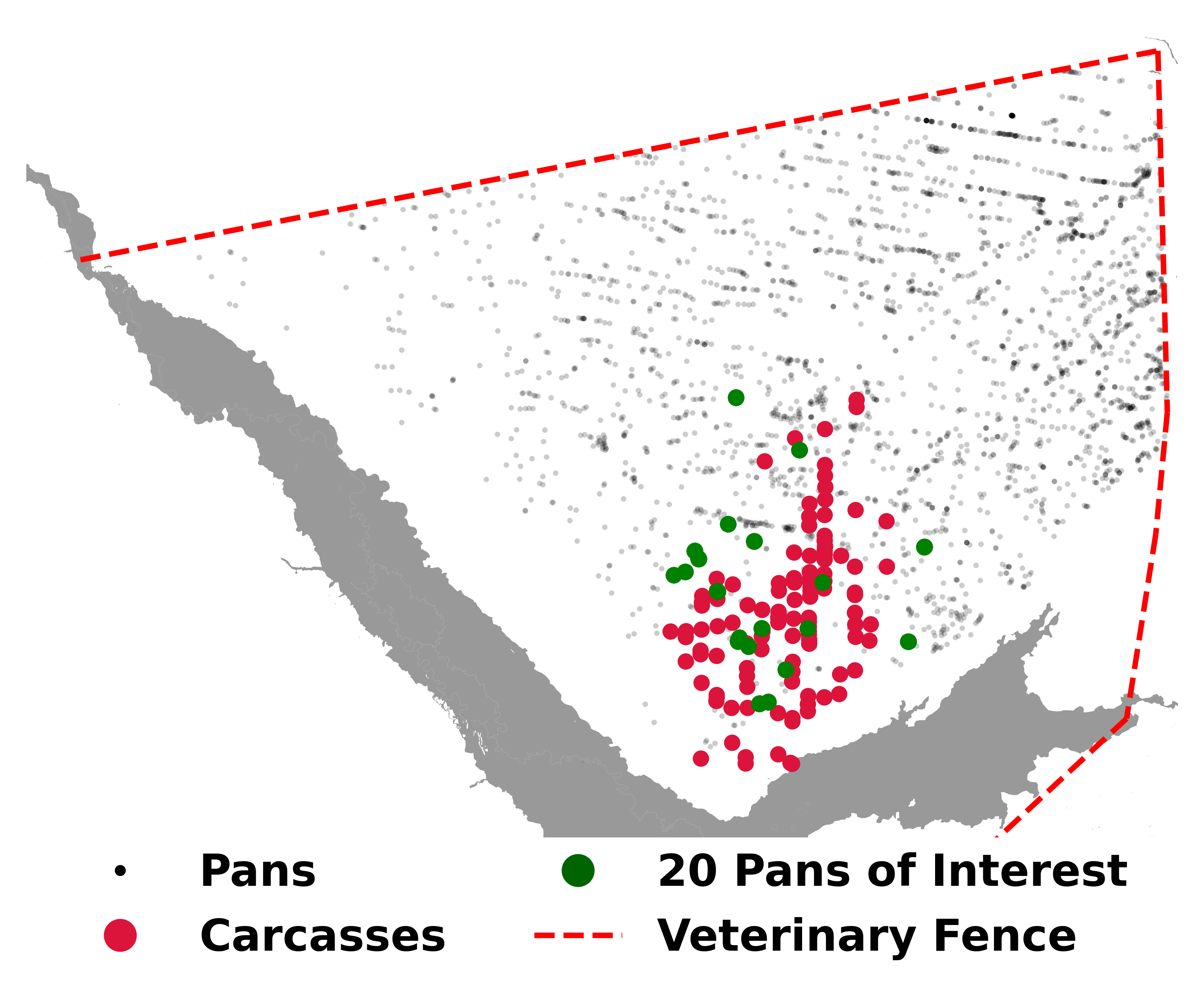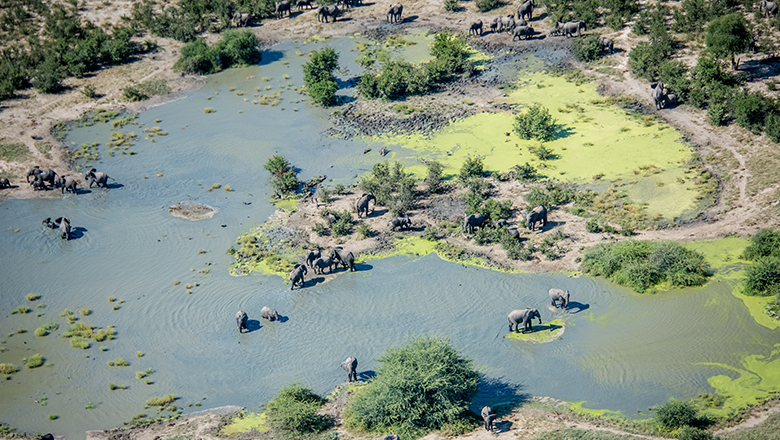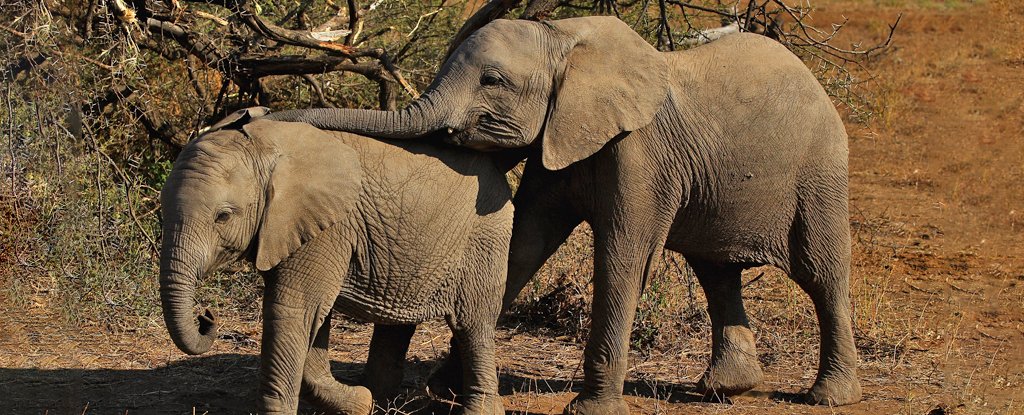The first dead elephants were discovered in May 2020. By July of that year, over 350 of the endangered animals had been found strewn lifeless across a remote region of Botswana.
Global concern rose rapidly as veterinarians at the scenes eliminated the usual suspects. There were no signs of starvation, infections, or naturally occurring anthrax, and the giant mammals’ tusks were still intact, ruling out poaching. Some of the elephants were found face down, suggesting a sudden collapse.
That left one prime suspect, toxic cyanobacteria – also known as blue-green algae – which now, four years later, a new study led by King’s College London supports.
Geographer Davide Lomeo and colleagues’ analysis of satellite data reveals toxic algal blooms had exploded in water sources near the Okavango Delta during the same time period, all but certainly poisoning the African bush elephants (Loxodonta africana).
“We identified 20 waterholes near fresh carcasses that experienced increased algal bloom events in 2020 compared to the previous three years combined. These waterholes also exhibited the highest average algal biomass of the period 2015 – 2023,” explains Lomeo.
The researchers examined the spatial relationship between 3,389 waterholes in the Okavango Delta, and the locations of the dead elephants.
“Algal blooms are routinely monitored by satellite, but this data isn’t often used to investigate mass mortality events,” says Lomeo.
“As the scale of elephant deaths from unknown causes was much higher than anything that’s been seen before, it’s important to use all sources of evidence to investigate what happened to these endangered animals.”

The team also found the elephant carcasses were more spread out than the pattern of historic deaths as marked by elephant bones – which tracks with a timeline of poisoning. The animals likely died within 88 hours of exposure, allowing them to walk some distance from the toxic waterholes before succumbing.
“Our results highlight that seasonal, predominantly rain-fed pans, rather than the permanent waterbodies (i.e., lakes, rivers, and lagoons) within the Panhandle, were the likely source of cyanotoxin exposure,” the team writes in their paper.
“Cyanobacteria are… often abundant in turbid, stagnant, and nutrient-rich waters, and several bloom-forming species can cause harm due to the production of toxins.”
Botswana, a landlocked southern African country, is home to the world’s largest remaining elephant population, with more than 130,000 individuals. But worldwide, these majestic animals are in decline.
This is one of the biggest known mass death events of any large mammal in recent times, yet it is far from an isolated incident.
In just the last year, 94,000 birds were killed at one lake by a climate-related outbreak of botulism in California; a severe heatwave sent over 100 monkeys falling dead from their trees in Mexico; thousands of eels were found dead in New Zealand streams; and Australian bats succumbed to mass starvation.
Terrible news today:
This year, one-third of coral cover has been destroyed in two northern sections of the Great Barrier reef due to anthropogenic heating.
Results for the southern sections (which were even hotter) have not been officially released.
www.aims.gov.au/information-…
— Terry Hughes (@profterryhughes.bsky.social) Nov 19, 2024 at 10:47 AM
While mass mortality events are often reported in isolation, they are becoming more frequent, and those listed above likely have a common cause.
From the elephants in Botswana to the worst mass bleaching of coral yet in Australian waters, our wildlife is besieged by the natural disasters we have wrought through climate change.
Toxic or oxygen-stealing microbe blooms, including cyanobacteria, are occurring more often both in freshwater and saltwater lakes, thanks to the warming conditions. These same conditions physiologically stress wildlife, making them more susceptible to diseases too.
“This event underscores the alarming trend of sudden, climate-induced diseases affecting large ungulates,” explain the researchers, “reflecting the broader, devastating impacts of climate change on biodiversity and ecosystem health.”

Yet despite this stark increase in deaths all around us, leaders and industries with the power to do something about it are actively exacerbating the situation by failing to reduce fossil fuel emissions.
“Southern Africa is projected to become drier and hotter under climate change,” says Lomeo.
“As a result waterholes across this region will likely be drier for more months of the year. Our findings point to the potential negative effects on water quantity and quality, and the catastrophic repercussions on animals, this could have.”
This research was published in Science of The Total Environment.





